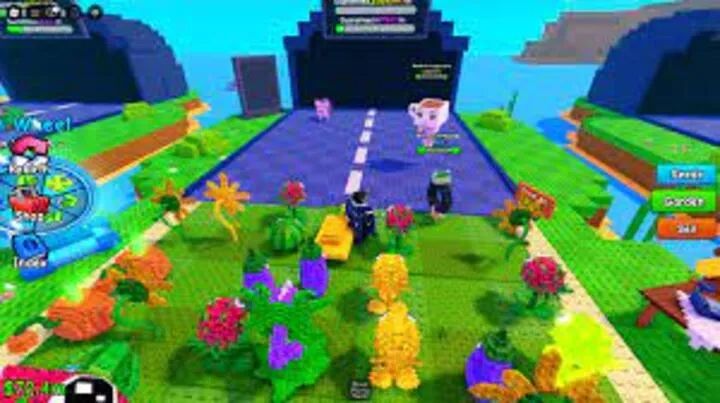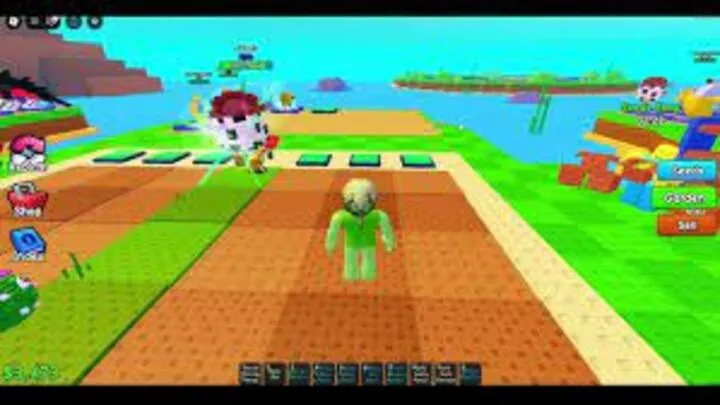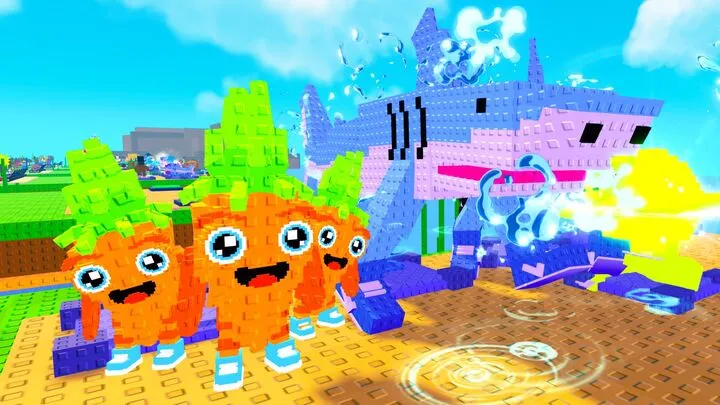Introduction
“Plants vs Brainrot” pushes players far beyond the comfort zone of simple tower defense. Beneath its twisted humor and chaotic visuals lies a battle system that’s both elegant and terrifying. Here, combat isn’t static—it mutates. Every plant, every enemy, every inch of the battlefield can evolve or decay, and understanding that transformation is the key to survival.
In this guide, we’ll dive into the Combat and Mutation System—exploring how battles unfold, how corruption transforms both allies and foes, and how players can harness mutation to their advantage. Whether you’re a tactical veteran or a curious newcomer, mastering the mutation cycle means dominating Brainrot itself.
1. Core Mechanics of Combat

1.1 Real-Time Hybrid Defense
Unlike traditional defense games where time flows predictably, “Plants vs Brainrot” uses a hybrid real-time system. Enemies don’t just march forward—they swarm, retreat, and regroup.
- Each plant attack interacts dynamically with Brainrot energy, altering its impact zone.
- Critical timing between attacks matters more than pure damage.
1.2 Adaptive Waves and Environmental Influence
Enemy strength depends on local corruption levels. The more rot accumulates, the faster enemies mutate.
- Overgrown areas increase enemy defense.
- Sunlight-rich zones weaken their regeneration.
Combat is never constant; it breathes and shifts with every second.
2. Understanding Mutation Energy
2.1 What Is Mutation Energy?
Mutation energy is the invisible resource driving the Brainrot phenomenon. It spreads like radiation, altering the DNA of every living organism it touches—including your plants.
2.2 Mutation Levels and Effects
There are five tiers of mutation energy, from Low Contamination to Full Rot Overload.
- At low levels, mutation can enhance plant resilience.
- At high levels, it warps them into unstable hybrids.
Knowing when to embrace or cleanse mutation determines victory or collapse.
3. The Dual Nature of Mutation: Blessing or Curse
3.1 Positive Mutation – Controlled Evolution
Controlled exposure to mutation allows plants to develop unique traits:
- Venom Bloom: gains toxic pollen damage.
- Photon Ivy: converts corruption into sunlight.
- Neural Fern: increases range and reaction speed.
3.2 Negative Mutation – Corruption Overload
Uncontrolled mutation results in chaos. Some plants may:
- Attack allies under confusion.
- Wither instantly when the rot reaches critical density.
- Spawn parasitic offshoots that consume your grid.
Balance is everything—mutate strategically, not recklessly.
4. Combat Roles and Mutated Units
4.1 Offensive Mutants
Plants like Burstcap or Inferno Root excel in high-rot zones. Their mutation boosts attack speed but shortens lifespan.
Tip: Deploy them near corruption borders where the mutation effect peaks.
4.2 Defensive Mutants
Defensive hybrids like Shellbark Wallnut gain hardened outer layers that resist decay.
However, prolonged exposure slows their regeneration—so rotate them frequently.
5. Enemy Mutation Patterns

5.1 Mutation Stages of Brainrot Enemies
Enemies mutate in predictable stages:
- Protoform: Basic infected organism.
- Amalgam: Gains new limbs and adaptive resistance.
- Overmind: Capable of absorbing sunlight directly from your plants.
- Rot Titan: Final mutation, a biomechanical terror.
5.2 Adaptive Intelligence
At advanced levels, enemies remember past attacks. If you overuse one strategy, they adapt. Alternate damage types to stay ahead.
6. Mutation Combos and Synergy
6.1 Chain Mutations Between Plants
Certain mutations interact when planted nearby:
- Venom Bloom + Frostroot = creates a chemical froststorm, freezing and poisoning simultaneously.
- Neural Fern + Glowvine = enhances field awareness, revealing cloaked enemies.
6.2 Controlled Mutation Fields
Use the Mutagenic Pods to trigger controlled mutation zones. These fields enhance all plant mutations by 20% for a short duration—ideal during boss fights.
7. Combat Environment and Mutation Spread
7.1 Terrain Influence on Mutation
Terrain type affects mutation flow:
- Wetlands: spread corruption faster.
- Rocky Fields: slow mutation diffusion.
- Solar Plains: purify low-tier mutations naturally.
Understanding geography gives you strategic leverage.
7.2 Environmental Cleanse Points
Hidden “Photosynthesis Wells” can purify entire map sections. Activating them mid-combat reverses mutation and restores your plants’ base stats.
8. Boss Fights and Mutation Mechanics
8.1 Boss Mutation Phases
Each major boss mutates as it takes damage:
- Phase 1: Standard attacks.
- Phase 2: Corrupted limb growth (increased area of effect).
- Phase 3: Brainrot aura expansion—debilitates nearby plants.
Recognize mutation triggers early and prepare anti-corruption units like Purity Spore.
8.2 Environmental Counterplay
Boss arenas often contain objects that react to mutation, such as Rot Crystals or Solar Bloom Cores. Use them to redirect mutation energy back at the boss.
9. Advanced Mutation Management
9.1 The Mutation Cycle Technique
Veteran players exploit the natural cycle of mutation and cleansing. Allow controlled corruption for damage buffs, then cleanse using Solar Wells before reaching overload. This rhythm maximizes both power and survival.
9.2 Gene Fusion and Mutation Customization
Later stages unlock the Gene Forge, allowing you to manually fuse mutated traits into new plant species.
- Mix offensive and defensive genes for hybrid strategies.
- Avoid combining unstable mutations—they can trigger collapse.
10. Long-Term Mutation Strategy and Meta Play

10.1 Balancing Risk and Reward
Every decision in “Plants vs Brainrot” has consequences. Overusing mutation makes you powerful—but unstable. The best players dance on the edge, pushing the system without falling into chaos.
10.2 Evolutionary Warfare
True mastery means weaponizing mutation. The corruption that once destroyed becomes your greatest ally. By understanding its rhythm and logic, you turn the infection against itself, becoming the gardener of chaos.
Conclusion
The combat and mutation system in “Plants vs Brainrot” is not merely a mechanic—it’s the game’s living soul. It challenges players to evolve, adapt, and rethink what defense means. Mutation isn’t evil; it’s transformation. Those who resist stagnation will thrive, while the rigid will rot.
Embrace mutation. Control it. Let it grow—but never let it consume you. In this world of living decay, only the adaptable survive.

















